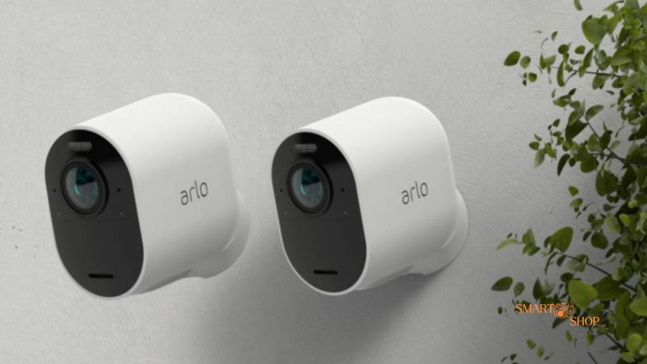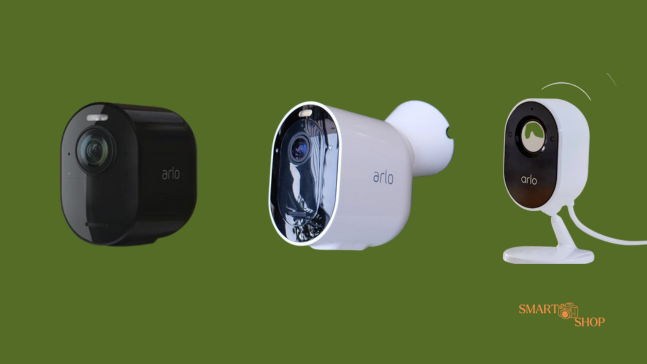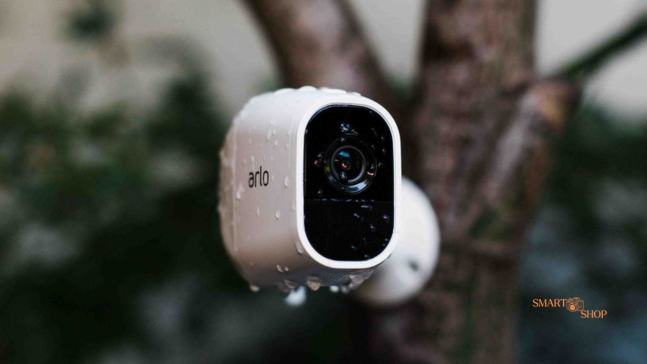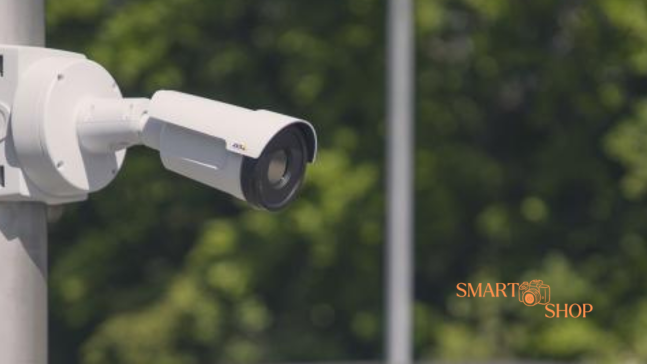The best height for security cameras is between 8 and 10 feet. Security cameras are a vital part of ensuring safety and security in any environment.
Camera placement is crucial for maximum effectiveness, whether used for surveillance in a commercial or residential environment. One of the most important factors to consider is the camera’s height. Choosing the best height for security cameras will depend on several factors, such as the purpose of the cameras and the layout of the area being monitored.
However, it is generally recommended to place cameras between 8 and 10 feet off the ground to capture optimal images while still keeping them out of the reach of potential vandals or intruders. We’ll examine the importance of camera height and offer tips for the most effective camera placement.
Why Height Matters
An important aspect to consider when purchasing security cameras is the height at which they will be installed. Many people need to be made aware of the impact that camera height can have on the effectiveness of their surveillance system. This article will explore the best height for security cameras and why they are essential.
Reducing Blind Spots
The height at which a security camera is installed can significantly affect its ability to capture images. Installing cameras too low can cause blind spots, where the camera fails to capture essential areas. This can leave your property vulnerable to theft, vandalism or other criminal activity. To reduce blind spots, it is best to install cameras at a height of 9 to 10 feet.
Maximizing Field Of View
Installing security cameras at the right height can also help maximise their field of view. The higher the camera is mounted, the wider the lens angle can be. This allows the camera to capture a wider area, providing additional coverage of your property and reducing the number of cameras needed to monitor a specific location. To maximise the field of view, it is recommended to install cameras at a height of 12 to 15 feet.
Minimizing Tampering And Damage
Another benefit of installing security cameras at the correct height is that it can help minimise tampering and damage. Cameras mounted too low are easily accessible and can be tampered with or damaged by intruders. Installing cameras that are out of their reach can decrease the likelihood of vandalism and tampering. To minimise handling and damage, it is recommended that cameras be installed at a height of 8 to 10 feet.
Ideal Heights For Different Locations
One of the most important factors to consider when installing security cameras is their height. The ideal height for a camera depends on where it is installed. This blog post will discuss the perfect heights for security cameras in different locations.
Residential Properties
Residential properties have different security needs compared to commercial and public spaces. The ideal height for a security camera on a residential property is between 6 and 8 feet above the ground. This height is suitable for capturing a clear view of the faces of people approaching the property or any other activity around the entry/exit points.
Homeowners should ensure the camera is not installed too high, as it may capture more sky than the intended area. It should not be installed at eye level as this may compromise residents’ privacy.
Commercial Properties
Commercial properties require security cameras to cover several areas, such as entrances, parking lots, hallways, stairwells, and storage areas. The ideal height for a camera in these locations varies depending on the region.
| Location | Ideal Height |
| Entrances | 8-10 feet |
| Parking Lots | 15-20 feet |
| Corridors/Stairwells | 7-8 feet |
| Storage areas | 8-10 feet |
It is essential to install cameras at a height that is difficult to access to ensure they are not easily tampered with. However, they should be installed at a reasonable height to make them difficult to adjust, maintain, or troubleshoot.

Public Spaces And Parks
It is necessary to monitor public spaces and parks to ensure the safety of citizens. The ideal height for a camera in these locations is between 15 and 20 feet. This height ensures you get a clear view while being out of reach of vandals and other malicious actors.
Additionally, these cameras must be installed to ensure that they do not obstruct public hallways or create hazards. It is important to note that surveillance in public spaces must be carried out according to local laws and regulations to respect citizens’ privacy.
Factors To Consider When Choosing Height
Choosing the best height for your security cameras is an essential factor that can determine the effectiveness of your surveillance system. Consider factors such as the level of coverage you need, camera placement, and lighting conditions to choose the appropriate height for your security cameras.
Installing security cameras is a smart move when protecting your home or business. They have become an essential component of most security systems. However, choosing the right height for your security cameras is crucial to ensure you capture high-quality images that can be used as evidence in the event of any security breach.
Type Of Camera
One of the most important factors to consider when choosing the height of your security cameras is the type of camera you have. Dome cameras, for example, are best installed on ceilings. Bullet cameras can be installed on walls or ceilings, depending on your desired viewing angle, while PTZ (pan, tilt, zoom) cameras can cover a wide range of areas and will need to be installed higher for better viewing.
Surrounding Environment
The surrounding environment is another crucial factor to consider when determining the height of your security cameras. Suppose the camera is installed in an area with a lot of foot traffic or tall structures such as buildings or trees. In that case, it is recommended that the camera be installed higher to ensure that it captures clear, unobstructed images.
Security Goals
Your security goals are another essential factor to consider when deciding the height of your security cameras. If you want to monitor a large area, such as a parking lot, it is recommended that cameras be installed higher. On the other hand, if you want to capture details of people’s faces, installing the cameras at a lower height is recommended. In conclusion, choosing the right height for your security cameras is crucial to ensuring you get optimal performance. By considering the type of camera, the surrounding environment, and your security objectives, you can install your cameras at a suitable height to achieve the desired security surveillance.
How To Safely Mount And Install Cameras
Installing security cameras in your home or business is an investment in safety and security. However, to get the most out of your cameras, you must know where to place them and how to mount them correctly.
Choosing A Location
The location of your security cameras determines how effective they are at keeping your property safe. When choosing a location for your cameras, consider the following:
- Entry Points – Cameras near entry points, such as windows and doors, are great for capturing intruders before they access your property.
- High Traffic Areas – Installing cameras in high-traffic areas helps you monitor people’s movements within your property.
- Blind Spots: Blind spots, such as corners and alleys, are prime places for intruders to hide. Placing a camera in these locations can help you cover blind spots and prevent intruders from taking advantage of them.
Selecting The Right Mounting Equipment
Once you have chosen the location for your security cameras, it is time to select the proper mounting equipment. Consider the following when choosing your mounting equipment:
- Camera Weight and Size: Your camera’s weight and size determine the type of mount you need. Choose a mount that can support your camera’s weight and is designed for your specific model.
- Environment: Consider the climate and environmental factors such as rain, wind, and sunlight in your area. Choose a mounting bracket to withstand these conditions and keep your cameras safe and stable.
- Accessibility: Make sure the mounting bracket is installed so that it is easy to access your camera for maintenance and adjustments.
Consulting With Professionals
If you are still determining which mounting equipment or camera placement is best for your property, consider consulting with professionals. A professional security company can advise you on the best camera placement and mounting equipment and even help you with the installation process.
Technology Solutions For Height Challenges
Achieving the best height for security cameras ensures maximum surveillance coverage and effectiveness. Technology solutions such as adjustable mounts and PTZ cameras can help overcome height challenges and optimise camera placement.
Regarding security cameras, placing them at the right height is crucial in ensuring they capture clear images without obstructing your view. However, achieving the desired height can often be challenging, especially in areas where mounting points are at a considerable height. This is where technology comes into play, providing various solutions to overcome height challenges and achieve optimal camera placement. Let’s explore some technological solutions to altitude challenges.
Pan-tilt-zoom Cameras
Pan-tilt-zoom (PTZ) cameras offer an excellent solution to height challenges. They enable remote control of the camera’s pan, tilt and zoom functions, allowing operators to adjust the camera angle, zoom in and out, and move the camera in any direction to capture the desired view. PTZ cameras are suitable for sites with different lighting conditions or where a single camera cannot cover a large area.
Elevated Platforms And Poles
Raised platforms or poles are an effective solution for locations where the camera must be placed at a relatively high point. They provide a stable base for mounting the camera and ensure that the camera has a clear view of the surroundings without obstructions. Raised platforms and poles are beneficial on large-scale industrial sites, construction sites, and commercial properties.
Wireless Connectivity And Remote Viewing
Wireless connectivity and remote viewing have revolutionised the security camera industry, making it easier to place cameras at any height while still being able to access and view the images remotely. By connecting the cameras to a wireless network, operators can access live images and recordings anytime. Remote viewing is especially beneficial for large-scale sites as it eliminates the need for physical security patrols, saving time and resources. In conclusion, height challenges can be overcome using technological solutions such as PTZ cameras, elevated platforms, and wireless connectivity. With these solutions, operators can optimise camera placement and ensure clear, unobstructed images are captured. By incorporating these solutions, companies can strengthen their security and prevent potential threats.
Cost Considerations And Budgeting
Cost considerations and budget are important factors when choosing the best height for security cameras. Installing cameras higher can increase your coverage area but can also come with additional expenses, such as mounting equipment and labour costs.
It is essential to weigh the benefits and costs to determine the optimal height for your security cameras.
Choosing the correct height is critical for optimal performance in security cameras. But once you’ve decided on the location, it’s essential to consider the cost implications. This section will discuss some cost considerations and budgeting tips to help you make an informed decision.
Upfront Costs Vs Long-term Savings
While it may be tempting to prioritise upfront costs, it’s essential to consider the long-term savings of investing in high-quality security cameras. Cheaper cameras may seem like a good option at first, but they can end up costing you more in repairs, maintenance, and replacements. Opting for high-quality cameras may have a higher initial cost, but they come with better features and durability. In the long run, this can help you save costs and better protect your property.
Comparing Options
When considering the cost of security cameras, it is essential to compare the available options. Some cameras have advanced features like night vision, motion detection, and high-resolution images, which can help provide more comprehensive surveillance. However, these cameras can be more expensive compared to basic models. While it’s important to prioritise quality, balancing it with your budget is essential.
Working With Installers On Pricing
Working with a professional when installing security cameras can help ensure the best placement and performance. Additionally, they can provide information on pricing options. Request quotes from multiple installers and compare prices and quality of work. Consider asking about any promotions or discounts that may be available. This allows you to make an informed decision while staying within your budget.
In conclusion, cost considerations and budget are important factors to consider when choosing the height of your security cameras. It is important to balance quality and affordability and work with a professional on installation to ensure proper fit and functionality. By considering these factors, you can make the informed decision that best suits your surveillance needs.
Legal And Privacy Implications
Security cameras are a great way to keep your business or property safe. However, before installing them, you should consider some legal and privacy implications. One of the most important factors to consider is the height of your security cameras.
Complying With Local Laws
Before installing security cameras, it is essential to ensure that you comply with all applicable local laws. Different states, counties, and even cities may have different rules regarding security cameras. These laws can dictate where to install cameras, how high they can be mounted, and what type of footage you can collect.
| State | Height Restrictions |
| Alabama | No restriction on height |
| California | No higher than 6 feet |
| New York | No higher than 12 feet |

Protecting Sensitive Information
Security cameras can collect a lot of sensitive information. It is essential to take steps to protect this information. For example, ensure your cameras are password-protected and only authorised personnel can access the footage.
- Use strong passwords to protect your images.
- Only grant access to authorised personnel.
- Periodically delete old footage to prevent unauthorised access.
Avoiding Misuse Of Surveillance Footage
Surveillance footage should only be used for its intended purpose: to provide security for your property or business. It should not be used for other purposes like entertainment or spying on employees. Ensuring that all staff know the appropriate uses of surveillance footage is essential.
- Use the footage only for its intended purpose.
- Do not use images for entertainment or to spy on employees.
- Educate staff on the proper use of surveillance images.
In conclusion, it is essential to consider the legal and privacy implications before installing security cameras. Comply with all applicable laws, protect confidential information, and prevent misuse of surveillance footage.
Future Trends And Developments
Future trends and security camera technology developments will continue evolving as technology advances and security needs change. The best height for security cameras will always ensure adequate surveillance coverage. With crime rates increasing, security cameras are becoming an essential part of our daily lives, not only for businesses but also for private residences.
Advances In Camera Technology
As newer and better technologies emerge, security monitoring will continue to evolve. One such advancement in camera technology is the emergence of Artificial Intelligence, which allows cameras to recognize objects and track movements with greater accuracy. AI-enabled cameras can quickly identify suspicious behaviour and act accordingly, such as sending an immediate alert or triggering an alarm. Additionally, cameras with higher resolution and zoom capabilities are now available, providing more accurate images and better coverage.
Integration With Other Security Measures
Integrating security cameras with other security measures, such as motion sensors, access control systems and alarms, creates a more complete security system. With their integration, the cameras can automatically trigger alarms or alert security personnel, significantly reducing response time. By having multiple layers of security, potential security breaches can be detected and stopped immediately.
Emerging Privacy Concerns And Solutions
As security cameras become more prevalent in society, so do privacy concerns. People may feel uncomfortable with constant surveillance, even if it is used for security reasons. However, there are solutions to this concern, such as using cameras that only record when activated by motion. Additionally, ensuring that cameras are placed in areas that do not violate privacy laws can help alleviate these concerns.
In conclusion, future trends in security camera technology will continue to evolve and provide businesses and individuals with effective and efficient security solutions. By considering the best height for security cameras, integrating them with other security measures, and addressing privacy concerns, we can ensure a safer environment for everyone.
Frequently Asked Questions On Best Height For Security Cameras
What Is The Best Height To Install A Security Camera?
The ideal height to install a security camera is between 8 and 10 feet above the ground. This height allows a clear view of the area, making it difficult for intruders to tamper with the camera. However, the specific height may vary depending on the camera location and the area being monitored.
What Is The Best Position For A Security Camera?
The best location for a security camera is at the property’s entrance points. This helps capture the face of each person entering or leaving the area. Additionally, cameras should be placed where they are out of reach of potential intruders and have a clear line of sight.
It is also important to consider the area’s lighting conditions to ensure that the camera can capture clear images.
Where Is The Best Place To Put Outdoor Security Cameras?
The best place to place outdoor security cameras is at all entry points, including front and back doors, windows, and garage doors. Corner and high positions can also provide wider viewing angles and deter tampering. When choosing a location, it’s essential to consider camera range, lighting, and weather resistance.
How High Should A Door Video Camera Be?
The camera on a door should be placed at eye level, about 5 to 6 feet off the ground. This height is ideal for capturing clear images of people’s faces, allowing easy identification. It is also recommended to tilt the camera slightly downward to capture more of the person’s body.
What Is The Ideal Height For Security Cameras?
The ideal height for security cameras is 8 to 10 feet off the ground.
Why Is The Height Of A Security Camera Important?
The height of a security camera is essential as it affects the camera’s field of view and image quality.
Should Security Cameras Be Higher Or Lower Than Eye Level?
Security cameras should be above eye level to prevent tampering and ensure better coverage.
Conclusion
After considering the factors that affect the best height for security cameras, it is clear that striking a solid balance between covering the area of interest and maintaining a good vantage point is paramount. From a technical perspective, the ideal height for security cameras is between 8 and 12 feet.
However, it is essential to consider the location’s specific characteristics and its unique threats. By following these guidelines, you can ensure optimal monitoring and protection of your property.



Pingback: How Long Does Film Last in a Camera